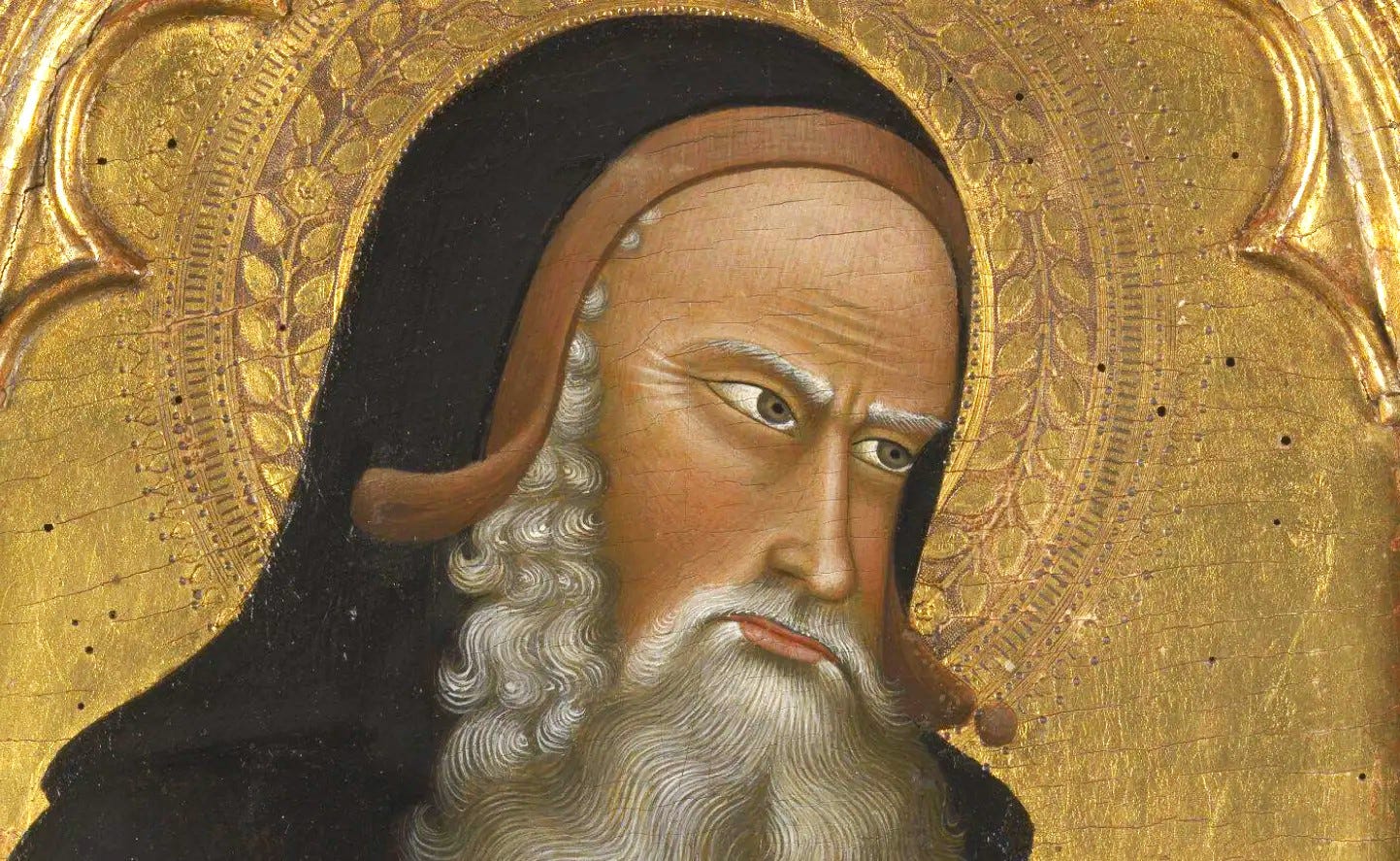Part IV of the desert and the pursuit of holiness
Holy solitude to Christian civilisation: desert monks and the birth of a sacred world

I came to cast fire on the earth, and would that it were already kindled!
The purpose of this website in its broadest terms, is to bring to light the foundations and track the development of Christian civilisation. It is my own exploration of where our culture, our ideas, all our aspirations and way of thinking comes from. What I have learned in the last ~five years is that the basis of our concept of “Christian civilization” isn’t political or philosophical - it is not, in fact, a product of any of our Bright Ideas.
No, our civilisation is not a political or social or cultural construct - not an invention of men, with all their ephemeral, transient “Bright Ideas”. All those elements grew naturally - with additions from Greek, Roman and Hebrew jurisprudence and philosophy - out of the practice of Christian contemplation of God, the pursuit at an individual level of the Transforming Union or “Theosis” as it’s called in the east. The animating spark - the holy, heavenly energies that create life itself - that brought these “dead” elements to life, came as a spill-over from the sanctification sought by the monks of the desert, a sanctification that burst forth like a flame from the desert and spread throughout the world.
We are used to hearing the expression, “Monks saved western civilisation,” and it usually refers to the Benedictines copying the old Roman and Greek texts in their scriptoria. But the expression should be something more like, “The monks’ prayer brought forth Christian civilisation.” My working thesis is: Christian civilisation is the secondary fruit of Christian mysticism; and this seems to be completely, perfectly backwards from what we are taught, even in “traditional” Latin Catholic circles.
Last week we talked about how the monastic tradition was brought from the old deserts into the European mountains and forests, and western monasticism was greatly boosted by the efforts of Charlemagne. In today’s post for paid subscribers, we’re going to look more deeply at the origins of Christian mysticism, the pursuit - in the beginning by only a handful - of the transforming union with God. This pivotal moment came to fruition in the Egyptian and Syrian deserts, between the fall of the old western Empire and the ravaging of Islam’s conquests of those places, a precious window of about 300 years.
This is the fourth in our series on Christian monasticism and mysticism. Read parts one, two and three.
The Sacred Images Project is a reader-supported publication where we talk about Christian life, thought, history and culture through the lens of the first 1200 years of sacred art. It’s my full time job, but it’s still not bringing a full time income, so I can’t yet provide all the things I want to and am planning for. You can subscribe for free to get one and a half posts a week.
For $9/month you also get the second half of the weekly Goodie Bag post, plus a weekly paywalled in-depth article on this great sacred patrimony, plus our Benedictine Book Club in the Substack Chat. There are also occasional extras like downloadable exclusive high resolution printable images, ebooks, mini-courses, videos and eventually podcasts.
If you would prefer to set up a recurring donation in an amount of your choice, or make a one-off contribution, you can do that at my studio blog.
This helps me a lot because the patronages through the studio blog are not subject to the 10% Substack fee:
This is the site where I post photos of my own work as it develops. I have a shop there where some of my drawings and paintings are available for sale as prints, as well as some other items.
Today’s featured print is this little painting of St. Anthony of the Desert, after an original 14th century fresco in one of our churches here in Narni. I’ve got him listed in the shop as a print on a wood panel - approximating the look of an icon. But he’d do well in other formats; dm me if you’d like to talk about a different version.
Subscribe to join us below.
This civilization aspired to reflect the order, justice, and holiness of God’s heavenly kingdom on earth, making every aspect of life an opportunity to encounter the divine. Just as the sacraments transform ordinary elements like water, bread, and wine into carriers of grace, so too did Christian civilization seek to transform the ordinary, natural structures of human society into conduits of God’s presence.




